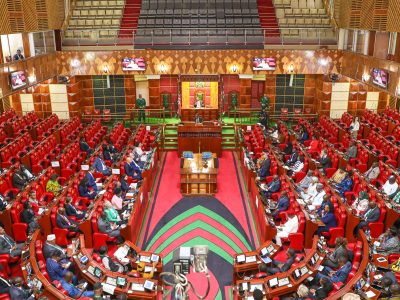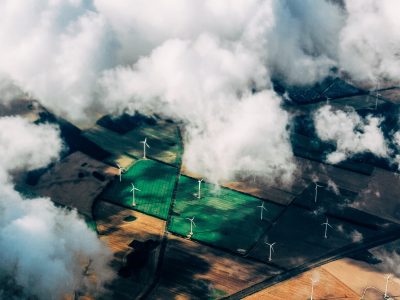
COVID-19 Recovery
COVID-Recovery Package Analyses
It is the choices of today that define the trajectory for decades to come. Decisions are urgently necessary to pave the way towards a more sustainable and resilient future, based on renewable energy sources, green technologies, and that are in accordance with the Paris Agreement and the Agenda 2030.
Governments around the world are currently working on recovery packages which are likely to exceed those seen during the financial crisis of 2008. Therefore, the design of COVID recovery and stimuli programmes is decisive in the effort to fast-track the economic and societal change towards a sustainable, green, and just future. To be most effective in the long run and guarantee economic growth, national and regional programmes directed at the economic recovery following the COVID-19 pandemic need to simultaneously consider solutions to the climate crisis.
Energy, as a prerequisite for all economic activity and a fossil-based energy generation as one of the greatest contributors to climate change need to be in the focus of rebuilding economies better as well as more resilient and sustainable. The (un)conditionality of commitments for high shares of renewable energy will decide on the future of the energy transition and on the success of mitigating dangerous climate change.
Parliamentarians play a key role in initiating, reinforcing and committing to legislation aiming at a clean energy transition. Scrutinising COVID-containment measures, evaluating post-crisis recovery packages, adopting budgets and holding governments accountable are key functions of legislators in the pandemic as well as in the day-to-day business.
This compilation of recovery package analyses aims at exploring the role of renewables in post-COVID19 recovery schemes of a diverse set of countries as well as of the EU. As a series, this research is conducted continuously and will be added to, once information is available.
European Recovery Packages
On 27th of May 2020, the EU Commission introduced its economic stimulus package in reaction to the raging COVID-19 pandemic. The budget of the EU’s recovery package, the ‘Next Generation EU’ (NGEU), amounts to 750 billion Euro.
Many of the policies and instruments included in the NGEU scheme build upon and resume the strategies developed and presented in the European Green Deal in late 2019.
The NGEU-related National Recovery and Resilience Plans, member states have to set up to access funds, must include a minimum of 37% of climate-related expenditures to align with and contribute to the EU’s overall climate neutrality target for 2050. The following measures represent some of the actions related to Renewable Energy:
- added funds to the Just Transition Fund, the Commissions aiming at reinforcing a just and inclusive transition of regions heavily relying on fossil fuels;
- reinforcement of the InvestEU flagship investment programme aiming at mobilising private investment for sustainable infrastructure projects across the EU;
- introducing the Solvency Support Instrument aiming at unlocking solvency support for companies of all sectors to transition to a cleaner, digitalised, and resilient future; and
- providing grants and loans through the Recovery and Resilience Facility that will be made available for member states to guarantee and fast-track a green and digital recovery and transformation of the economy.
As an initial response to the COVID-19 crisis, the French government introduced in March 2020 a EUR 300 billion state-guaranteed loan programme. In subsequent stimulus interventions, the French government came to the rescue of specific industries. For example, in April 2020 a EUR 7 billion aid package was made available to Air France, but it came with “climate conditions”.
After the European Union agreed on its stimulus package, the French government launched “France Relance” (“France Re-launch”). The package aims to enable the economic, social and ecological rebuilding of the country over the period 2020-2030, with a focus on reversing rising unemployment, aiding French investment competitiveness through tax cuts for businesses, and providing specific incentives for the country’s transition to a green economy.
The plan allocates EUR 30 billion for the “ecological transition” and the development of greener energy policies. The package includes support for:
- Energy renovation of buildings and small and medium-sized enterprises
- Decarbonisation of industry
- Advancing the circular economy
- Ecological transition of the agriculture sector
- Accelerating the transition to low-carbon transport and related infrastructure
- Strengthening the uptake of green technologies, including hydrogen
- Establishing new climate financing schemes
Germany’s 130 billion Euro COVID-19 recovery package is one of the biggest and so far, ‘greenest’ economic stimulus packages in Europe.
Measures related to the support of renewables and a green energy transition include:
- changes in renewables-related policy and taxation regulations,
- investments to the promotion of sustainable transportation and mobility,
- financial reinforcements to the existing hydrogen strategy,
- investments in the energy efficiency of buildings.
Apart from the measures announced by the German federal government, this analysis includes a presentation of measures added by a set of various federal states.
On 7 October 2020, the Spanish government unveiled a EUR 72 billion stimulus plan to help the economy rebound from the effects of the coronavirus. The recovery programme (El Plan de Recuperación, Transformación y Resiliencia de la Economía Española) will spend the amount between 2021 and 2023 and is estimated to give the economy a fiscal jolt that is supposed to boost GDP by an additional 2.5% and create 800,000 jobs.
The Plan is explicitly aligned with the European Green Deal, as well as the Sustainable Development Goals. Around 80% of the funds will come from the European Union recovery fund and the rest from another of the bloc’s financing vehicles. Spain is the second-biggest recipient of EU recovery funds.
According to the government, 37% of the recovery package is dedicated to achieving an “ecological transition.” The Plan foresees the mobilisation of investments of EUR 241 billion (of which 80% is expected to come from the private sector) for the deployment of renewables, increasing energy efficiency and electrifying networks, and is projected to create between 250,000 and 350,000 jobs in the period 2021—2030. Key relevant commitments in the package include:
- The restatement of the goal to achieve a 100% renewable energy system by 2050;
- The deployment of at least 250,000 electric vehicles by 2023, as an interim milestone to achieve 5 million electric vehicles by 2030;
- The creation of at least 100,000 vehicle re-charging points across the country;
- The renovation of over half a million homes over the next three years to make them more energy-efficient
Asian Recovery Packages
Like most of the countries reeling under the pandemic, Bangladesh was no exception and witnessed a heavy blow to its economy. Especially the labour-intensive textile industry was hit by the lockdown measures which restricted the movement of human resources as well as materials.
In order to support economic recovery and ensure liquidity in the market, Bangladesh’s government stipulated a stimulus package providing tax incentives to businesses as well as low-interest loans for consumers and workers. Some of the measures include:
- Supporting continued salary payments for export-oriented industries;
- Low-interest loans for cottage industry;
- Financial support for the agricultural sector;
- Soft loans for the renewable energy industry, energy efficiency, water conservation and management, waste management as well as resource efficiency and recycling sectors;
- Roll out of sola home systems as well as support for mini and micro-grids;
- Promotion of net-metering schemes for solar home systems and manufacturers to offset electricity bills.
At the onset of 2020, India was well on its path to achieve its renewable energy target of 175 GW by 2022. The rapid spread of COVID however led to a significant downturn of the renewable energy (RE) sector in India. Subsequently, many developers sought an extension for commissioning their RE plants which should have been ready in the first half of 2020.
In response, India has launched a very coherent recovery package titled AtmaNirbhar Bharat – “self-reliant India”, USD$ 265 billion strong. Renewables, as a way to reduce energy imports, increase and stabilise energy access is an important part of India’s recovery package. In addition to the central recovery measures, many states have issued smaller, local recovery packages. Some of the measures related to renewable energy include:
- Support to accelerate the deployment of solar pumps for farmers through strengthening the PM Kusum Scheme;
- Subsidisation of solar rooftop installations and net-metering;
- Building up and strengthening development and deployment of electric vehicles(cars, busses, rickshaws etc.) through production targets, purchase incentives and a scrapping premium for old and highly polluting 2-wheelers;
- Launch of the Decentralised Renewable Energy (DRE) Livelihood Applications in Rural Areas policy, to support local economies and build local entrepreneurship;
- Financial and regulatory support measures such as project extension for ongoing and new projects to be commissioned, purchase obligations of RE power, decrease of required performance security deposits for solar tenders.
Malaysia was one of the earliest countries to have witnessed the outbreak of COVID-19 pandemic. Being a global tourism hub, the disruption has severely hit the Malaysian economy since many countries went into lockdown. As an effect of pandemic and lockdown, Malaysian economy took a hit. The Malaysian GDP tumbled to -17% in Q2 compared to 4% in the corresponding quarter of 2019.
The renewable energy industry has been badly affected by the pandemic: projects were delayed or halted altogether.
To re-start the recently growing RE sector, the government has stipulated a range of financial measures such as tax incentives, exemption of the Green Investment Tax Allowance and the Green Income Tax Exemption and has launched its biggest solar tender – of 1 GW – so far. The tendering process will be sped up and favour local players.
On 27th April, Myanmar’s Ministry of Planning, Finance and Industries (MoPFI) launched a comprehensive economic stimulus plan. The COVID-19 Economic Recovery Plan (CERP) consists of 7 goals, 10 strategies, 36 action plans and 76 actions that cover a range of fiscal and monetary measures.
The plan, launched with a unifying slogan “Overcoming as One”, had all the considerations to bring back the economy on the right track. It involved 7 goals:
- Improve Macroeconomic Environment through monetary stimulus;
- Ease the impact on the private sector through improvements to investment, trade and banking sector;
- Easing the impact on labourers and workers;
- Easing the impact on households;
- Promoting innovative products and platforms;
- Strengthening the healthcare system;
- Increasing access to COVID-19 response financing.
However, the CERP has been termed as emergency response and is currently revised to encompass a bigger umbrella of actions and measures over a longer-term titled Myanmar Economic Relief and Reform Plan (MERRP).
The government is sticking to its plan to provide universal access to sustainable electricity services by 2030, under its National Electrification Plan. As a part of this plan, major projects are being rolled out by the Myanmar government.
Like most other countries, the Philippines economy took a hit and tumbled when the coronavirus spread. As a consequence, the Philippine economy faces its first recession in 29 years. The Philippines relies heavily on coal and as a consequence of supply chain disruptions and lockdown measures, introduced to contain the spread, the generation of coal fell significantly between March and April 2020. As a result, the coal prices skyrocketed, putting an additional burden on already constraint households.
Urged by the Climate Change Commission (CCC) of the Philippines in August 2020, climate resilience and sustainability strategies should be integrated as strategic principles to build back better in the post-pandemic era. On 12th September, the Philippines signed its 165 billion pesos (US$ 3.4 billion) strong emergency package into law. The package aims to strengthen the healthcare sector and support businesses’ recovery and is primarily aimed at facilitating a quick response to the pandemic.
Further, to ensure that energy security and sustainability are addressed, multiple additional measures have been stipulated:
- Additional funds available under the Access to Sustainable Energy Program by the European Union to electrify Mindanao Island
- Introductin of sustainability principles into corporate governance frameworks under the Sustainable Finance Framework of the Central Bank
- Green Energy Auctions and Green Energy Tariffs
- Strengthening of the renewable energy – agriculture – fishery nexus
- Moratorium on coal additional coal plants
In July 2020, the South Korean government its ambitious Korean New Deal which accumulates to around $USD 132.7 billion. The New Deal aims to foster the country’s twin transition towards a green and digital economy. Roughly half of the package is allocated for the green transformation, aiming to create 1.9 million additional jobs.
Energy efficiency, hydrogen, renewable energy and eco-friendly re-modelling of buildings are at the heart of the green transformation. Some of the key measures include:
- Green and smart remodelling to improve energy efficiency in schools and other public buildings;
- Establishment of smart, green industrial complexes, including 100 eco-factories and 1,750 clean factories as well as 25 cities;
- Increase renewable energy generation to 42.7 GW by 2025, focusing on solar and offshore wind generation;
- Promotion of energy sharing models and public participation (e.g. as a cooperative);
- Promoting hydrogen-powered transport (private & public) through e.g. providing 200,00 hydrogen cars;
- Promotion of e-transport through the supply of 1,130,000 electric vehicles and required infrastructure.
To ensure smooth implementation of the Korean New Deal, several top-level meetings are regularly taking place.
Latest Articles on COVID Recovery



IRENA Legislators Dialogue at COP27



From commitment to action – the 7th IRENA Legislators Forum 2022

GRC end-of-year review 2021

